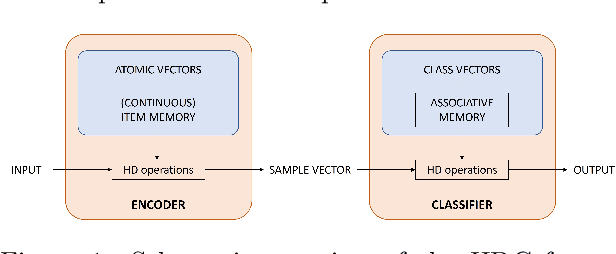An Encoding Framework for Binarized Images using HyperDimensional Computing
Paper and Code
Dec 01, 2023



Hyperdimensional Computing (HDC) is a brain-inspired and light-weight machine learning method. It has received significant attention in the literature as a candidate to be applied in the wearable internet of things, near-sensor artificial intelligence applications and on-device processing. HDC is computationally less complex than traditional deep learning algorithms and typically achieves moderate to good classification performance. A key aspect that determines the performance of HDC is the encoding of the input data to the hyperdimensional (HD) space. This article proposes a novel light-weight approach relying only on native HD arithmetic vector operations to encode binarized images that preserves similarity of patterns at nearby locations by using point of interest selection and local linear mapping. The method reaches an accuracy of 97.35% on the test set for the MNIST data set and 84.12% for the Fashion-MNIST data set. These results outperform other studies using baseline HDC with different encoding approaches and are on par with more complex hybrid HDC models. The proposed encoding approach also demonstrates a higher robustness to noise and blur compared to the baseline encoding.
 Add to Chrome
Add to Chrome Add to Firefox
Add to Firefox Add to Edge
Add to Edge